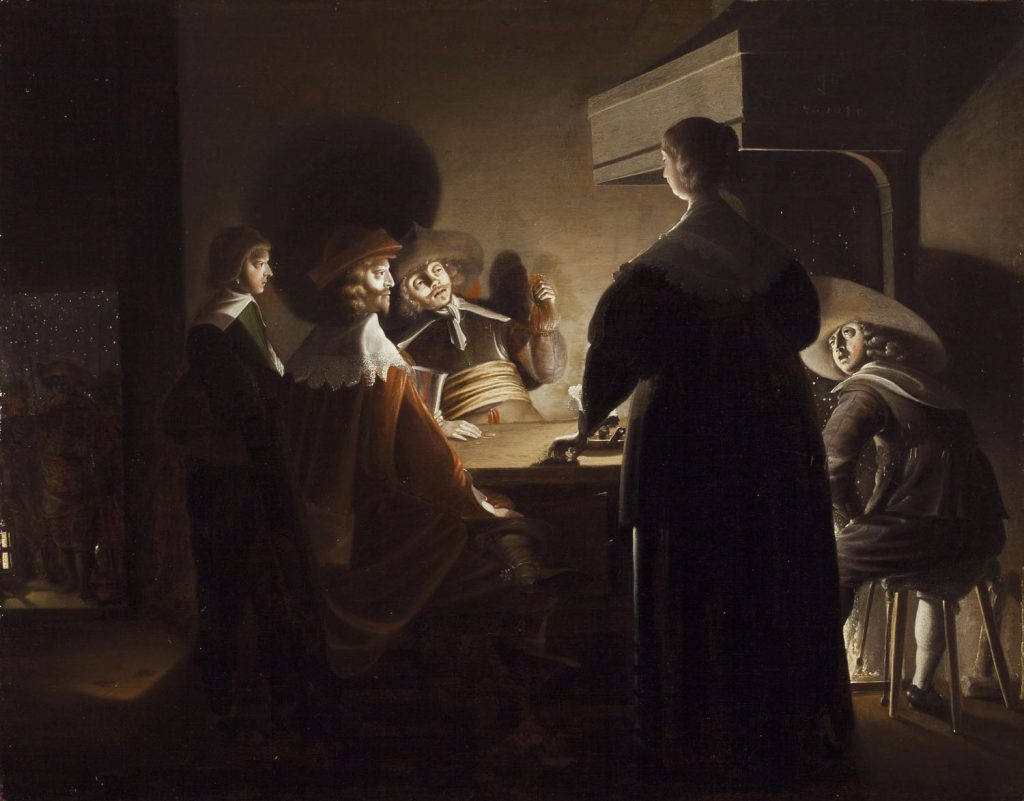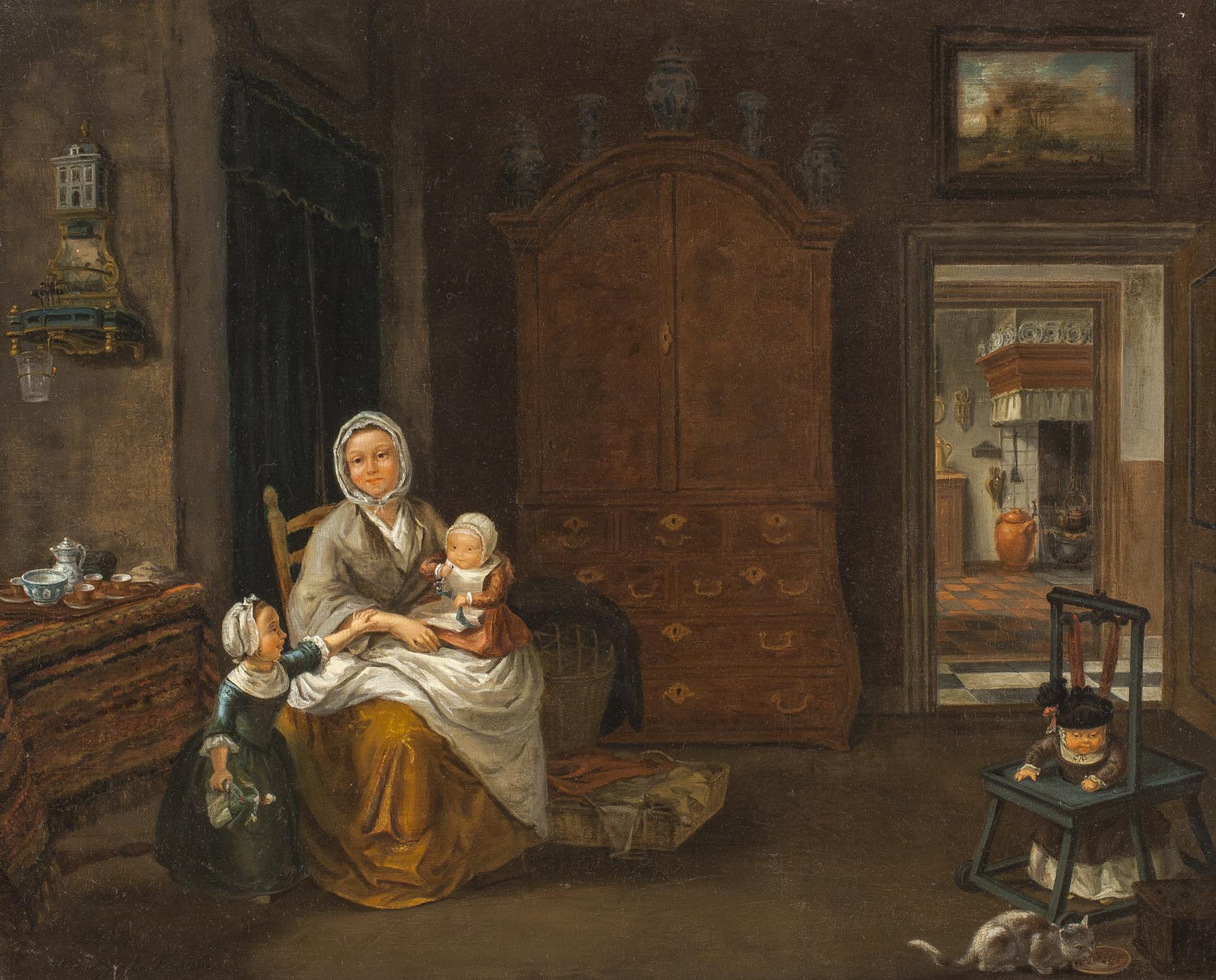Wolfgang Heimbach
c. 1613 - c. 1678
A Tavern Scene illuminated by Candle Light

Medium:
Oil on Panel
Category:
Dimensions:
45(h) x 56.5(w) cms
Signed:
Signed with Monogram and Dated 'WH F. 1635'
Exhibitions:
Essay:
Wolfgang Heimbach was born at Ovelgönne near Pinneberg in 1615. The son of a bookkeeper at the corn exchange, Heimbach, who was bron deaf mute, was widely known as 'the Ovelgönne mute'! He travelled extensively in Holland (Haarlem and Utrecht, possibly Amsterdam and Delft), Germany (Oldenburg, Bremen) and Italy (Naples, Rome, Florence). It is thought he met Gerrit van Honthorst in Utrecht, who was to have a strong influence on his work, although his paintings also show the influence of Pieter Codde, Willem Buytewech and Dirck Hals) After Utrecht his painting took a dramatic turn towards the Caravaggesque movement, particularly in his use of artificial light.
He was probably in Vienna in 1640 until 1642 and shortly afterwards went to Italy. In Rome gained a number of important commissions. A letter of 1646 mentions Ferdinando II, the Grand Duke of Tuscany as a patron, but he was also working for members of the Medici and Doria Pamphilj families. He left Italy in 1651. Between 1652 and 1653 he was the Court painter to Anton Günther, Graf Oldenburg, but by the end of 1653 he was in Denmark where he soon found employment with Frederick III, staying there from 1653 until 1662. Thereafter he was between Oldenburg and Copenhagen until 1670 when he was in Münster in the employ of Bishop Christoph Bernhard van Galen.
Heimbach's pictures are often genre scenes similar to those of Hals and Willem Duyster. His signature style is easily recognisable and often show figures holding candles. This was inspired by the Caravaggisti during Heimbach's visit to Italy in the 1640s and probably also by the chiaroscuro paintings of Honthorst. However, the pale, marble-like skin and heavily lidded eyes are particular to Heimbach alone.
-
This highly dramatic scene lit seemingly by four different sources of light (candlelight, firelight and outside the lantern and starlight) is typical of Heimbach when he moves towards a Caravaggistic mood. The theatrical shadow thrown by the hat of the Soldier seated across the table is particularly effective in embuing the scene with heightened drama. The dramatic sense is increased by the reaction of the other characters and the relatively impassive silhouetted woman who has clearly just imparted something of some importance. Further tension is added by the apparent appearance through the open door of an armed group of men. It is their barely noticeable presence, and only now dimly possible to make out due to their bright lantern and the myriad of stars above that make us, the onlooker, further intrigued.
Dated 1635 this painting in all probability was painted during his time in Utrecht where he would have seen the Caravaggist work of Honthorst. The second most important influence on him was the work of Pieter Codde and Willem Duyster in Amsterdam and we can see this in the mask like features and crisply painted clothing of the figures.
Provenance:
Private collection, Saone-et-Loire, France since the second half of the 19th century
